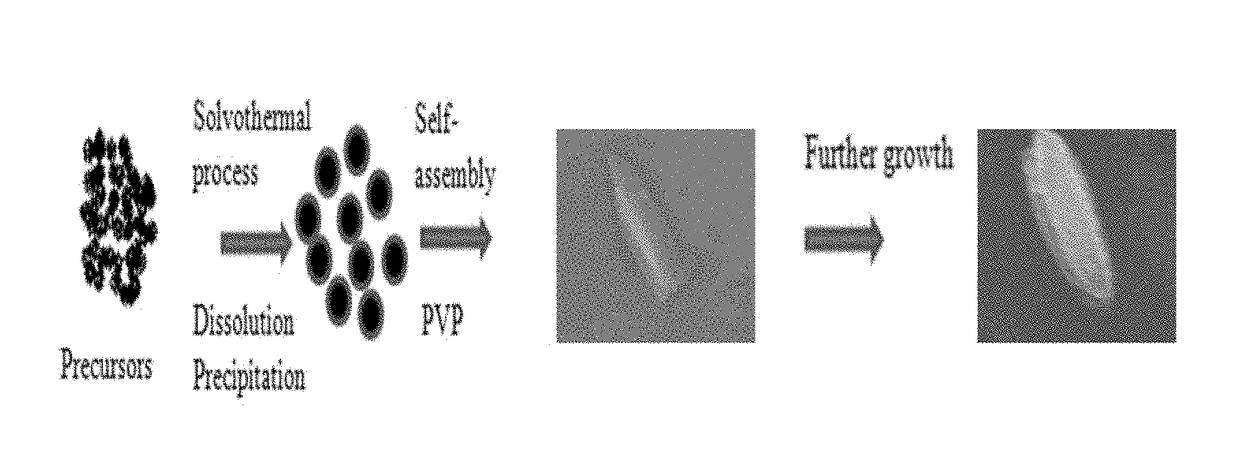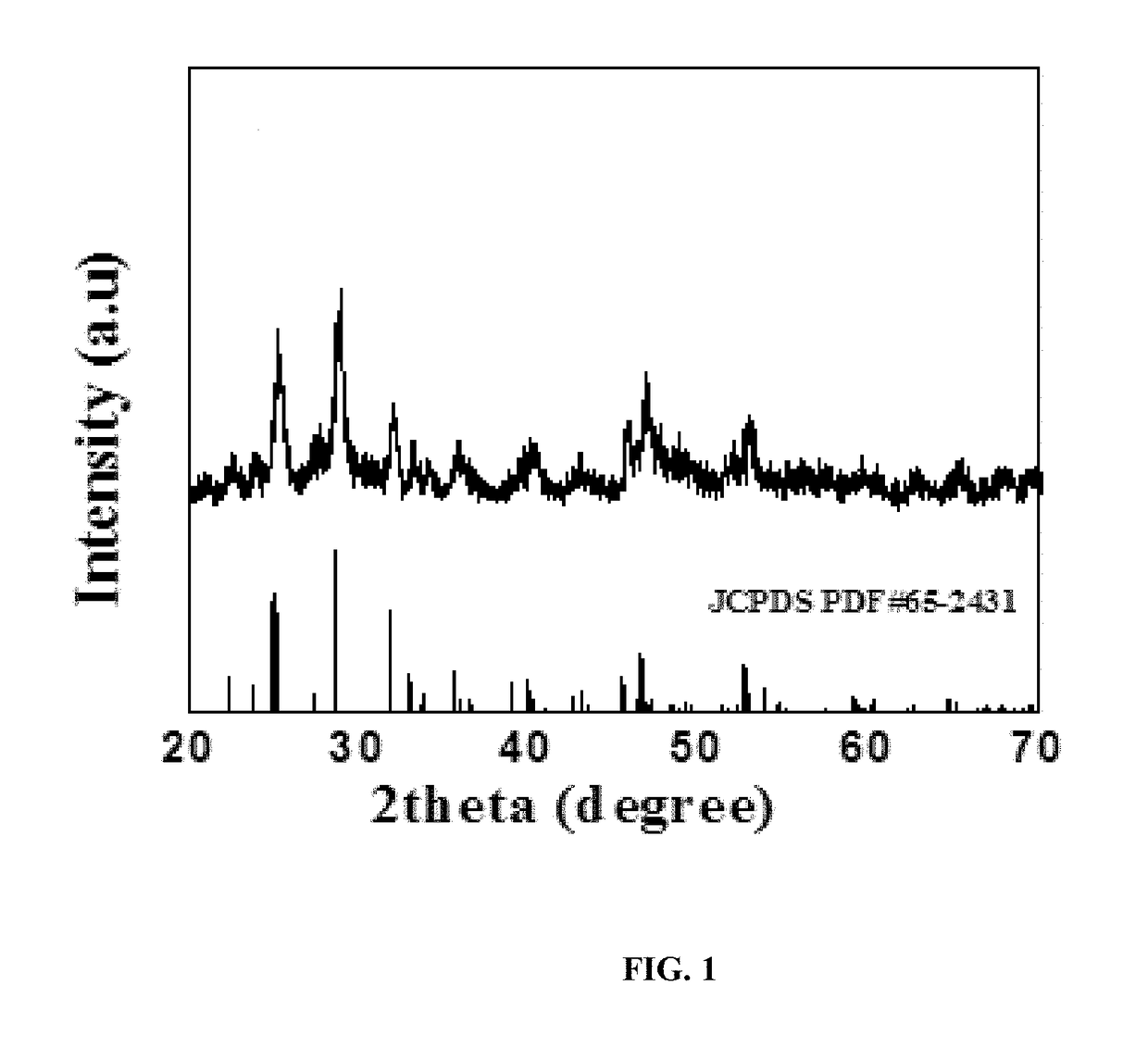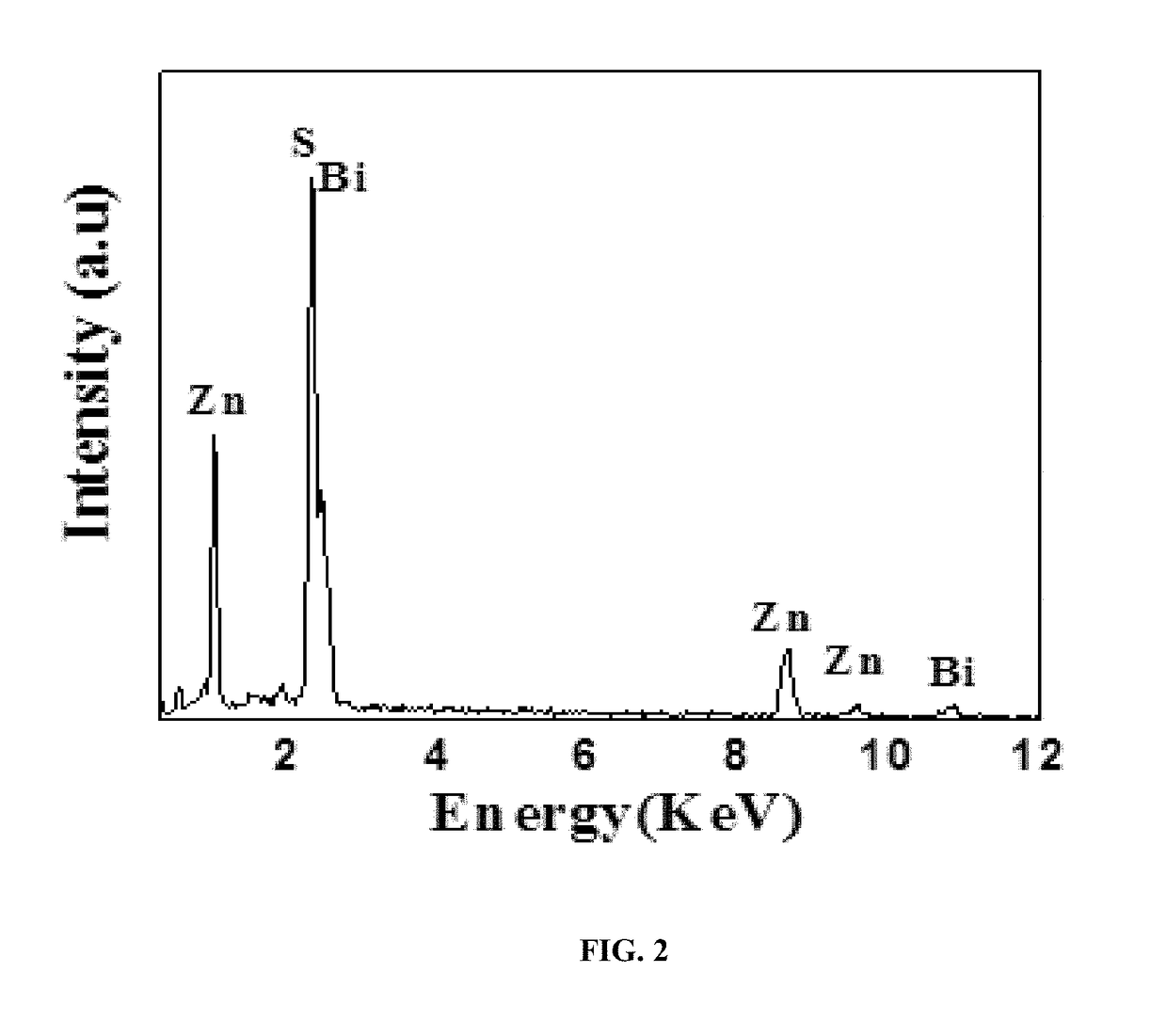Heterostructured Bi2S3—ZnS photocatalysts and methods thereof
a photocatalyst and heterostructure technology, applied in the field of heterostructured bi2s3 — zns photocatalysts, can solve the problem that most of the reported catalysts exhibit limited photocatalytic activity under visible light, and achieve the effect of accelerating the formation of hydrogen gas
- Summary
- Abstract
- Description
- Claims
- Application Information
AI Technical Summary
Benefits of technology
Problems solved by technology
Method used
Image
Examples
example 1
Preparation of Photocatalysts
[0119]Analytical grade BiCl3, Zn(CH3COO)2.2H2O, ethylene glycol, thiourea, polyvinyl pyrrolidone (PVP-K30) and ethanol were purchased from local suppliers and used as received without further purification. To prepare the photocatalysts 0.5 mmol of BiCl3 and 1.0 mmol of Zn(CH3COO)2.2H2O was added to 20 mL of ethylene glycol followed by the addition of 3.0 mmol of thiourea and 0.5 g of polyvinyl pyrrolidone (PVP-K30). The mixture was stirred well at room temperature and then transferred into a Teflon-lined autoclave and heated in an electric oven at 200° C. for 20 hours. The autoclave was then cooled naturally, and the product was centrifuged and washed several times with deionized water and ethanol before being dried at 60° C. for 24 hours.
example 2
Characterization of the Prepared Photocatalysts
[0120]Powder X-ray diffraction (XRD) patterns were obtained using a Philips PW / 1840 diffractometer (40 kV, 25 mA) with Cu-Ka radiation, k=1.542 {acute over (Å)}. Data was collected in the 2θ angle range of 20-70° at a rate of 2° C. / min. The element composition was determined by a Horiba EX250 X-ray energy-dispersive (EDX) spectrometer associated with a field emission scanning electron microscope (FE-SEM; Hitachi, S-4800). A UV-Vis diffuse reflectance spectra of the product was obtained on a UV-Vis spectrophotometer (UV-2550, Shimadzu, Japan). BaSO4 was used as a reflectance standard in a UV-Vis diffuse reflectance experiment and the spectra was recorded in a range of 200-800 nm.
[0121]The phase purity of the as-synthesized product was determined by powder X-ray diffraction (XRD). FIG. 1 shows the X-ray diffraction (XRD) patter of the prepared photocatalyst. The XRD peaks pattern for the product of the solvothermal process can be indexed ...
example 3
Morphology Characterization of the Prepared Photocatalysts
[0122]The morphologies of the as-synthesized products were characterized by a field emission scanning electron microscope (FE-SEM; Hitachi, S-4800) at an acceleration voltage of 10.0 kV. The morphologies of the as-synthesized photocatalyst products were investigated by field-emission scanning electron microscopy (FE-SEM). To identify the role of polyvinyl pyrrolidone (PVP) in the formation of chloroplast-like structures, the reaction was performed without PVP and with different amounts of PVP. FIG. 4 presents the SEM image of the Bi2S3—ZnS product obtained without the addition of PVP to the reaction mixture. FIG. 5 presents the SEM image of the Bi2S3—ZnS product prepared at 200° C. with 0.1 g of PVP in the reaction mixture. FIG. 6 presents the SEM image of the Bi2S3—ZnS product prepared at 200° C. with 0.2 g of PVP in the reaction mixture. FIG. 7 presents the SEM image of the Bi2S3—ZnS product prepared at 200° C. with 0.5 g o...
PUM
| Property | Measurement | Unit |
|---|---|---|
| Temperature | aaaaa | aaaaa |
| Temperature | aaaaa | aaaaa |
| Fraction | aaaaa | aaaaa |
Abstract
Description
Claims
Application Information
 Login to View More
Login to View More - R&D
- Intellectual Property
- Life Sciences
- Materials
- Tech Scout
- Unparalleled Data Quality
- Higher Quality Content
- 60% Fewer Hallucinations
Browse by: Latest US Patents, China's latest patents, Technical Efficacy Thesaurus, Application Domain, Technology Topic, Popular Technical Reports.
© 2025 PatSnap. All rights reserved.Legal|Privacy policy|Modern Slavery Act Transparency Statement|Sitemap|About US| Contact US: help@patsnap.com



